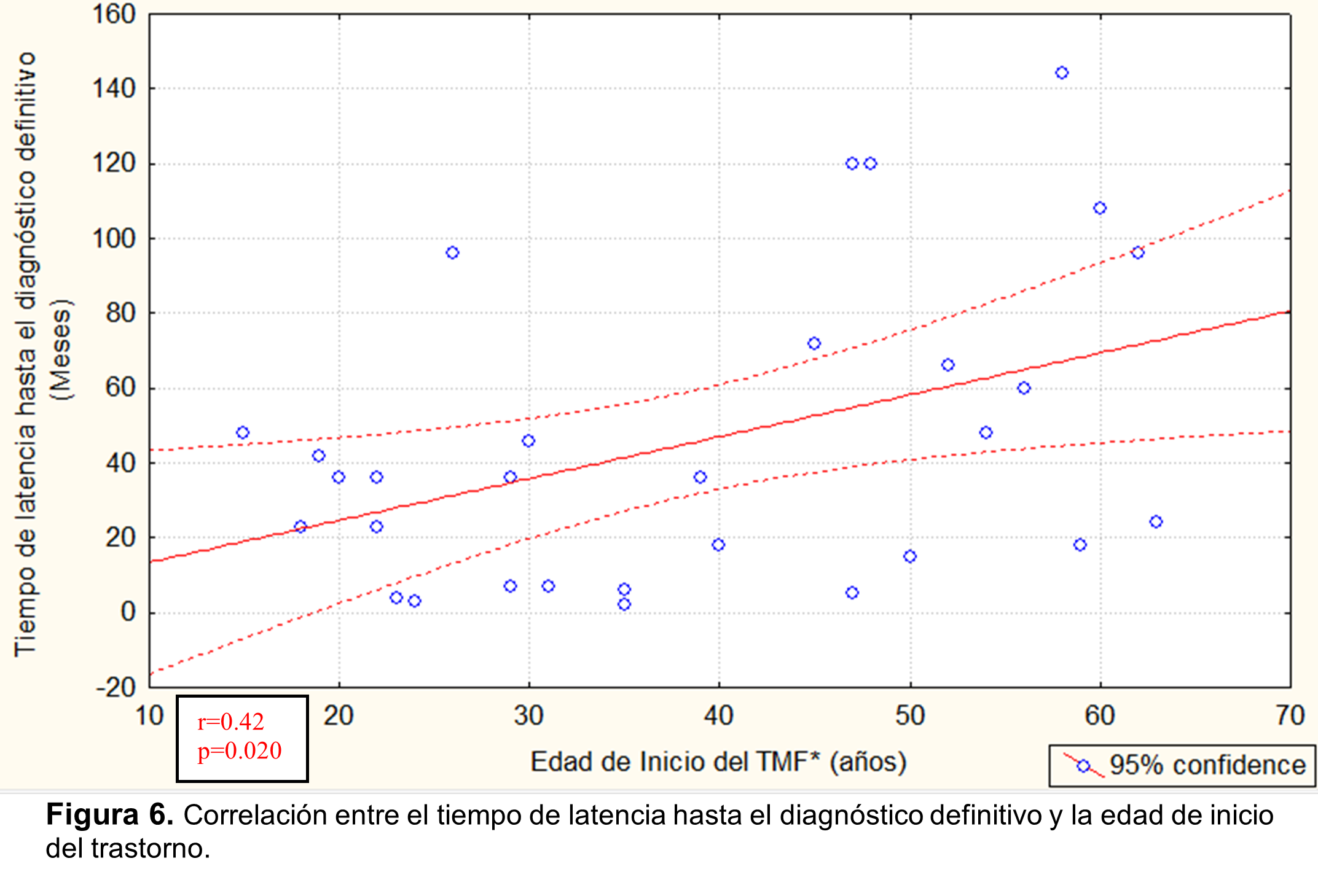Objective: To clinically characterize functional movement disorders in a Cuban cohort.
Background: Functional movement disorders are those that cannot be explained by an organic disease and are often considered to be due to psychological causes [1,2] . As a result of the clinical heterogeneity and the diagnostic challenge they represent, it is necessary to characterize these patients in order to achieve the development and execution of individualized and effective diagnostic and therapeutic strategies, in addition to the fact that we do not have references in the country of published studies of this type.
Method: Observational, descriptive, cross-sectional, retrospective study of patients diagnosed admitted to the Institute of Neurology and Neurosurgery of Havana with functional movement disorders in the period between January 2015 and December 2021.
Results: 30 patients with functional movement disorders were included, the majority being women (77%), with a mean age of 42 years. Psychiatric comorbidity was identified in 27% and the presence of precipitating factors in 40% of the patients. Dystonia was the predominant disorder (35%), with a sudden onset (53%) and fluctuating course (47%). Ehlers Dahnlos Syndrome was found as a comorbidity in 10% of the patients. The latency time between the onset and the definitive diagnosis was correlated with the sex, origin, age, and form of onset of the disorder, observing a directly proportional relationship between the age of onset and the latency time.
Conclusion: Our series contributes to the characterization of functional movement disorders in a sample of the Cuban population, demonstrating a predominance of dystonia over tremor, differing from previous studies, in addition to supporting the possible relationship between Ehlers Danlos syndrome and the presence of functional movement disorders. The relationship between the time of onset of the disease and the definitive diagnosis may be related to the fact that neurodegenerative disorders are more frequent at older ages, serving as a distracting factor when considering functional disorders as the main diagnosis.
References: [1]Czarnecki K, Hallett M. Functional (psychogenic) movement disorders: Curr Opin Neurol. August, 2012;25(4):507–12. doi: 10.1097/WCO.0b013e3283551bc1
[2] Pringsheim T, Edwards M. Functional movement disorders: Five new things. Neurol Clin Pract. April,2017;7(2):141–7. doi: 10.1212/CPJ.0000000000000350
To cite this abstract in AMA style:
Y. Guzman, A. Soto, T. Saldivar. Clinical characterization of patients with functional movement disorders [abstract]. Mov Disord. 2023; 38 (suppl 1). https://www.mdsabstracts.org/abstract/clinical-characterization-of-patients-with-functional-movement-disorders/. Accessed May 12, 2025.« Back to 2023 International Congress
MDS Abstracts - https://www.mdsabstracts.org/abstract/clinical-characterization-of-patients-with-functional-movement-disorders/

